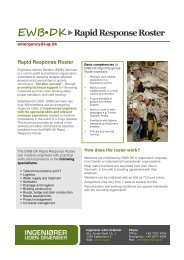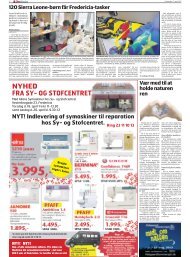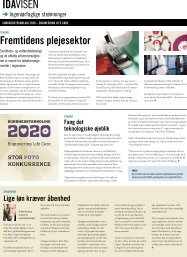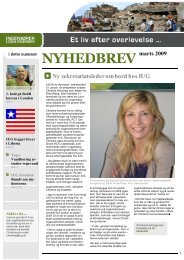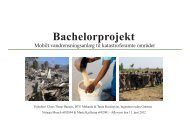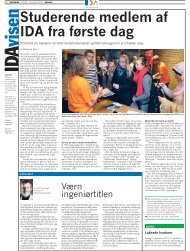You also want an ePaper? Increase the reach of your titles
YUMPU automatically turns print PDFs into web optimized ePapers that Google loves.
10<br />
Alternative blade design<br />
The option for an alternative blade design, which is based on a simple airfoil, is investi-<br />
gated in this chapter.<br />
The blade geometry of the design proposal, described in section 6.2, is based on a NACA<br />
airfoil which has good aerodynamic properties and decent manufacturability. It is however<br />
possible to utilise simpler airfoils that have reduced aerodynamic properties, but superior<br />
producability when considering the available manufacturing options in developing coun-<br />
tries. Among home builders of wind turbines it is a widespread concept to use simple<br />
curved airfoils, which enable the turbine blades to be made from e.g. cut-out sections of<br />
plastic drain pipes or from rolled steel plates.<br />
The considered potentials of u<strong>sin</strong>g an alternative blade design based on a simple airfoil<br />
are:<br />
� Blade that may be produced easily and by simple means<br />
� Increased flexibility as the alternative design may be used when the NACA-based<br />
design is inconvenient<br />
It is beyond the scope of this project thesis to fully design a blade other than the one al-<br />
ready described in section 6.2. It will however perform a preliminary investigation of the<br />
possibility of u<strong>sin</strong>g simple airfoils. This is done firstly by testing lift and drag properties of<br />
a simple airfoil. Although widely used, virtually no data is available on the simple airfoils<br />
and it is therefore found necessary to design the test airfoil. Two different candidates are<br />
designed and the best is selected from the test results. Secondly the test data is employed<br />
in the rotor design tool with the aim of designing a rotor with performance equal to that of<br />
the current NACA-based rotor at a wind speed of 12 m/s. This provides a preliminary view<br />
of the resulting blade dimensions and the rotor efficiency when u<strong>sin</strong>g a simple airfoil, and<br />
thus gives an indication of whether it is applicable in the design.<br />
91



